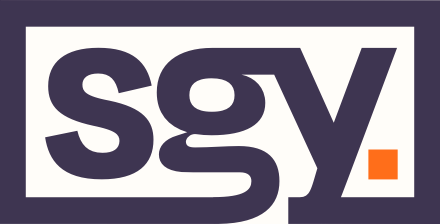The business benefits of good UX
“User experience”, or UX, is a term that most people in online marketing are familiar with. Everybody wants to provide a good experience for their users. It has become a bit of a buzzword though, to the point where there is a risk that marketers can just pay lip service to it or think of it as an afterthought. For digital products and services, good UX isn’t just a “nice to have” – it’s an essential component of success. Not just for the benefit to your users, but for the value it can bring your business.
So what is exactly is UX and why should you care about it?
As defined by the Neilson Norman Group, user experience “encompasses all aspects of the end-user’s interaction with the company, its services, and its products”. In terms of website and tools, some of the things that contribute to a user’s overall experience are the information architecture (IA) or navigation, user interface (UI), design layout, copy and visuals.
UX design is the process of designing digital products and services that are useful, easy to use, and delightful to interact with. The goal is to enhance the experience users have while interacting with your product, and making sure they find value in what you’re providing.
UX design is made up of many different disciplines, including interaction design, wireframing, user research, information architecture, visual design, usability, microcopy writing, and human-computer interaction.
A simple example of good UX is a form field that prefills an address. Instead of asking the user to fill out separate fields for street address, suburb, postcode and state, the user just starts typing in one field and selects the full address as it appears below.

Example of a form field that prefills address.
And how does it create value and benefits for businesses?
The better your UX, the more you will encourage users to spend more time on your website and the more likely they will be to complete your forms, calculators and tools, or act on your CTAs (calls to action). This will directly add value to your business through increased conversions. On the flip-side, provide poor UX and you will quickly frustrate your users and they won’t stick around long. People have come to expect easy and enjoyable experiences from online financial services, especially with the rise of fintech startups that have succeeded by focusing on UX.
Harvard Business Review found that satisfied customers are likely to recommend a product or service to multiple people via word of mouth. In fact, 23% of customers who had a positive experience told 10 or more people about it. The same study also found that the most effective way to satisfy customers was by making things easy and removing obstacles.
Research by Dr. Susan Weinschenk of Human Factors International showed that developers spend 50% of their time reworking previous projects. In other words: 50% of development costs are wasted on fixing errors that a UX design process would have weeded out during an earlier iteration. That’s a lot of wasted money.
So what do you need to think about to ensure good UX?
UX needs to be considered from the very beginning of a digital project, and should factor in to all your decision-making to ensure that your business objectives align with your user’s needs and goals.
Here are some things you should be thinking about:
- Making sure you invest the time in UX for every digital project, from a full site rebuild to a stand-alone campaign. It will save you money in the long-run.
- Who is your audience and what do they want to do? Think about things from their perspective.
- What is the user problem or need you are trying to solve? How are you making things easier for the user?
- What is the user goal and what is the business goal? Make sure that they intersect.
- What devices are they using and what channels are they visiting from?
UX is a complicated and wide-ranging field, and there is a lot to think about. But you don’t need to be an expert to start improving the way your customers experience your brand. Keep it at the forefront of your mind when working on digital projects, from the concept and briefing stage through to reviewing design and development work, and you will improve outcomes for your customers and for your business.
